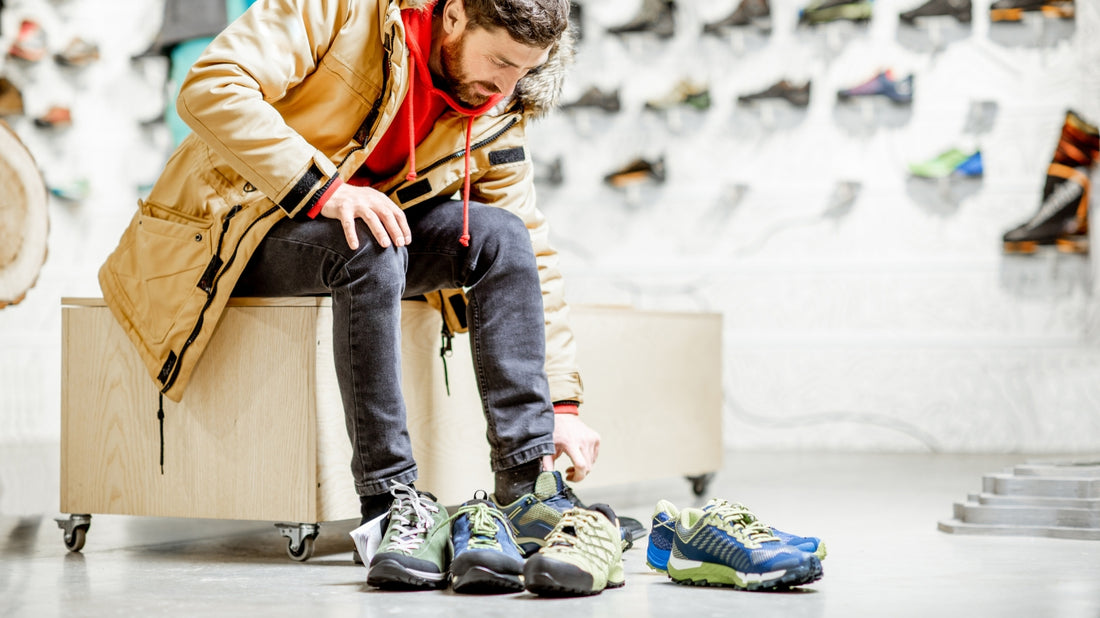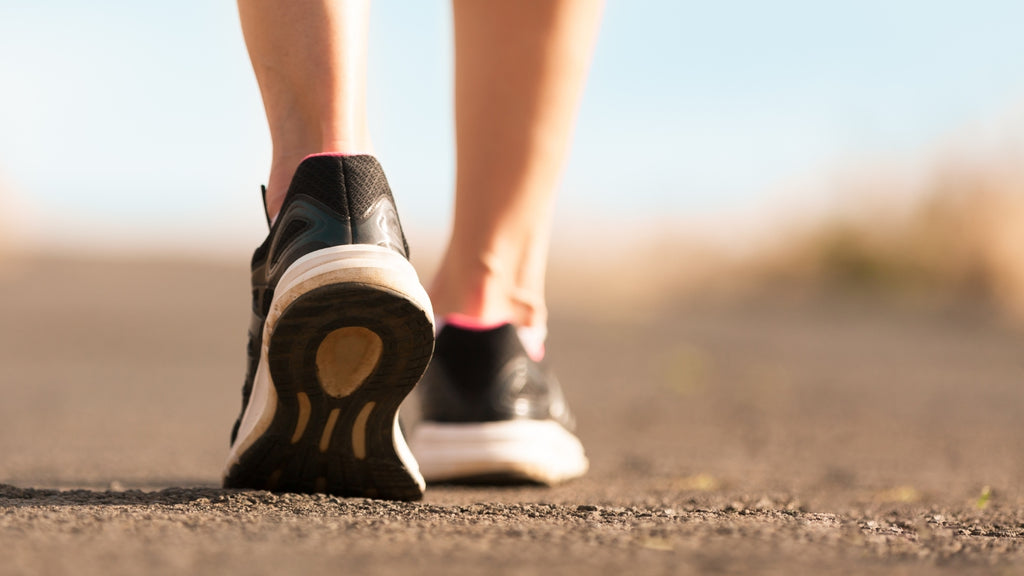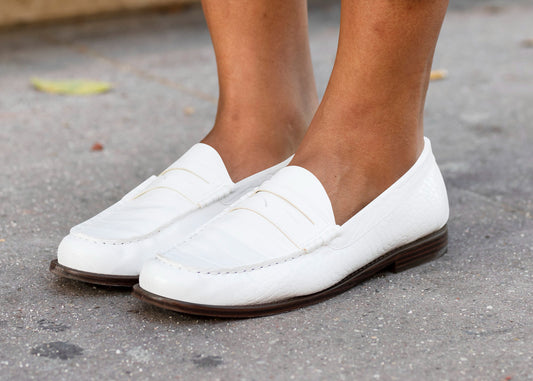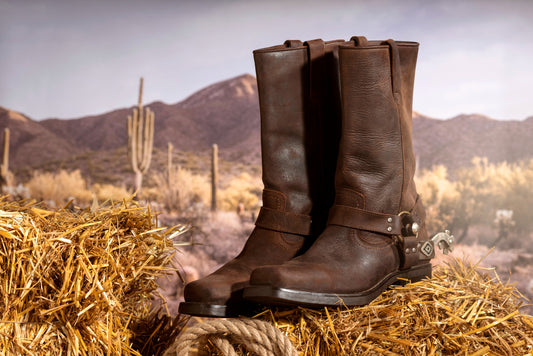How To Buy Good Walking Shoes - Shoe Buying Guide

As someone who enjoys walking for both exercise and as a means of transportation, having a reliable and comfortable pair of walking shoes is essential. Fitness walking is a fantastic form of exercise, boosting your health without the strain of high-impact exercises.
But to truly benefit, learning how to choose walking shoes that offer optimal support from heel to toe is critical. This guide will unveil what to look for in a pair of shoes, from shoe brands known for their quality to the best ways to pick the best walking shoe tailored just for your feet.
Whether you're trekking through city streets or rambling across countryside paths, the right shoes can make all the difference.
What Makes A Walking Shoe Good

What really sets walking shoes apart from your regular sneakers or running shoes? Walking shoes are designed specifically for the motion of walking, with features that cater to the unique needs of a walker's feet.
Let's take a closer look at some of the key components that make a walking shoe good:
Comfort Fit
Selecting the right walking shoe begins with understanding comfort fit, which is vastly different in walking shoes as compared to traditional athletic shoes.
A shoe that fits perfectly should have enough room to wiggle your toes without feeling cramped, safeguarding against blisters. Every shoe differs; thus, trying on various sizes can help find the ideal match that aligns with your foot’s biomechanics.
Support
Support in walking shoes is critical, especially for individuals with overpronation or those who overpronate, where the foot rolls inward excessively.
Unlike running shoes, which are designed for forward motion, walking shoes should offer support that caters to the lateral and forward movements of walking. The insole and midsole play a significant role in providing the necessary stability and support for healthy pronation.
Material
The material of a walking shoe affects its breathability, durability, and overall comfort. Look for shoes made from materials that allow air circulation to keep the feet dry and at a comfortable temperature.
Durability comes from high-quality materials that can withstand the wear and tear of daily use, making the shoe a dependable option for any path you take.
Durability
Durability is essential for any type of shoe, but even more so for walking shoes, which see a lot of use over various terrains.
A durable sole not only withstands wear but also contributes to the shoe’s overall support and comfort. Look for shoes that highlight their durable construction and materials, ensuring that they can respond well to frequent use without sacrificing comfort or performance.
Walking shoes need to offer plenty of cushioning to absorb the impact of each step, protecting the feet and joints from strain. The midsole should provide ample cushioning, yet it's essential to not confuse excess softness with support.
The right walking shoe balances cushion and support, offering a comfortable experience without compromising on the shoe’s structural integrity.
Factors to Consider When Buying Walking Shoes
Don't just blindly buy a pair of walking shoes based on recommendations or brand loyalty. Everyone's feet are unique, and what works for one person may not be the best fit for another.
Here are some factors to consider when buying walking shoes:
Arch Support
When considering arch support, identify your arch type before shopping for new shoes. High arches require shoes with built-in support that matches their curvature, while flat feet benefit from shoes designed to enhance stability. Look for a shoe that promotes balanced pressure distribution and shock absorption, preventing discomfort during long walks.
Cushioning
Cushioning plays a pivotal role in the overall comfort and shock absorption of walking shoes. A well-cushioned shoe can significantly reduce the impact on joints and muscles, making it ideal for extended periods of walking. Ensure the area around your longest toe and the rest of the foot feels adequately supported without being too snug.
Breathability
Breathability is crucial for maintaining foot health and comfort, especially during longer walks or in warmer climates. Look for a shoe made with materials that allow air to circulate freely around your feet, helping to prevent moisture buildup and odor. This feature is especially important in shoes for walking or hiking in varied conditions.
Traction
The best shoes for walking in different terrains are those with excellent traction. A shoe should blend flexibility with a durable outsole that can grip various surfaces securely. This is particularly important for shoes for hiking or navigating slippery urban streets, ensuring safety and stability with every step.
Flexibility
A walking shoe should offer flexibility to accommodate the natural movement of your foot. Test the flexibility by bending the shoe to ensure it moves with your foot's natural motion. This quality helps in preventing strain on your feet during walks, enabling a more natural and comfortable stride.
Weight
The weight of your shoes can greatly affect your walking experience. Heavy shoes can lead to quicker fatigue, while lighter shoes can enhance your endurance. Look for a shoe that feels light on your foot while still providing the necessary support and protection for your chosen walking environment.
Price
While price is an important consideration, investing in a quality pair of walking shoes can save you money in the long run. Rather than opting for the cheapest option, consider the value of the shoe in terms of durability, comfort, and support. A good pair of walking shoes is an investment in your health and should last you many miles.
Read related article: How Long Do Running Shoes Last?
Tips for Finding the Perfect Pair of Walking Shoes
To further ensure you find the perfect pair of walking shoes, here are some additional tips to keep in mind:
- Know Your Needs and Preferences: Before heading to the shoe store, understand the requirements of your walking workouts. The ideal walking shoe should be tailored to your foot's specific needs, such as arch type or any existing foot conditions. Consider the kind of surfaces you'll be walking on and choose the right cushioning that can best absorb shock, ensuring both the toe and the front feel comfortably snug without pressure.
- Try Before You Buy: Always try on shoes before making a purchase. Walk around the shoe store to get a feel for how each new pair fits. Focus on the toe box area to ensure it allows for natural toe movement and doesn't cramp your style. The right fit can enhance your walking experience, providing comfort and support where needed.
- Shop at the Right Time of Day: Feet tend to swell during the day, so try on new shoes in the afternoon or evening when your feet are at their largest. This ensures that the shoes will fit comfortably, even during long walking workouts, and prevents buying shoes that are too small and restrictive.
- Wear Appropriate Socks: Bring the socks you plan to wear during your walks when you try on shoes. This helps in selecting a pair that fits well with the thickness of your socks, ensuring an accurate fit and better protection against blisters.
- Consider Orthotics: If you use orthotic inserts, bring them along when shopping for new walking shoes. They can significantly alter how a shoe fits. The ideal walking shoe should accommodate your orthotics comfortably, providing additional support and helping to distribute pressure evenly across your foot.
- Don't Sacrifice Quality for Price: While it's tempting to choose a less expensive pair, the ideal walking shoe should be seen as an investment in your health. Quality shoes last longer, provide better support and absorb shock more effectively, protecting your feet during walks. Opt for the best quality you can afford to avoid frequent replacements and potential foot issues.
- Replace Old Shoes: Keep track of the mileage on your walking shoes and replace them when they start to show wear. Over time, the support and cushioning decrease, compromising the shoe's ability to absorb shock and provide adequate protection for your feet.
- Get Recommendations from Other Walkers: For insights on durability, comfort, and support, ask fellow walkers about their preferred shoes. Peer recommendations can guide you towards finding the best shoe for your needs while highlighting options you might not have considered otherwise.
When to Replace Your Walking Shoes
Replacing your walking shoes every 300 to 500 miles or every 6 months to a year is recommended. However, some factors may require you to replace them earlier, such as:
- Worn Outsoles: Check the tread and outsole of your shoes regularly. If they appear significantly worn down, it's time for a new pair.
- Decreased Cushioning: Over time, cushioning can lose its ability to absorb shock effectively, leading to discomfort and potential foot injuries.
- Uncomfortable Fit: If your shoes start feeling less supportive or cause discomfort during walks, it's time for an upgrade. An ill-fitting shoe can lead to blisters, calluses, and other foot issues.
Read related article: How Long Do Walking Shoes Last - Replacing Shoe Guide
How to Take Care of Your Walking Shoes
To prolong the lifespan of your walking shoes and maintain their performance, here are some tips to take care of them:
- Clean Regularly: Keep your shoes clean by removing any dirt or debris after each walk. Use a soft brush or cloth and mild detergent to gently clean the shoe's exterior, including the outsole.
- Air Dry: Avoid using a dryer to dry your shoes as it can damage the materials and decrease their lifespan. Instead, stuff your shoes with newspaper or paper towels and let them air dry naturally in a well-ventilated area.
- Rotate Your Shoes: Alternate between two pairs of walking shoes to give each pair time to rest and recover from wear. This helps in prolonging their lifespan and ensures you have a spare pair if one gets wet or dirty.
- Store Properly: When not in use, store your walking shoes in a cool, dry place away from direct sunlight. This prevents the materials from degrading or fading prematurely.
- Use Water and Stain Repellent: Protect your shoes from water and stains by using a water and stain-repellent spray. This helps in maintaining their appearance and prolongs their lifespan.
- Invest in Quality Shoe Cleaning and Maintenance Products: To keep your walking shoes in top condition, invest in high-quality shoe cleaning and maintenance products. These can help remove tough stains, protect against water damage, and restore the shoe's materials.
Closing Thoughts
The last thing you want is to wear walking shoes that cause discomfort or, worse, lead to foot injuries. By following these tips and taking good care of your walking shoes, you can find the perfect pair that will support and protect your feet for miles to come.
Remember to regularly check for signs of wear and tear and replace your shoes when necessary. Investing in a quality pair of walking shoes is an investment in your health and well-being. So, take your time to find the right fit and consider all factors before making a purchase. Your feet will thank you!
Make sure to check out Stone and Clark's All-in-One Sneaker Cleaning Kit that comes with everything you need to keep your walking shoes in top condition.






